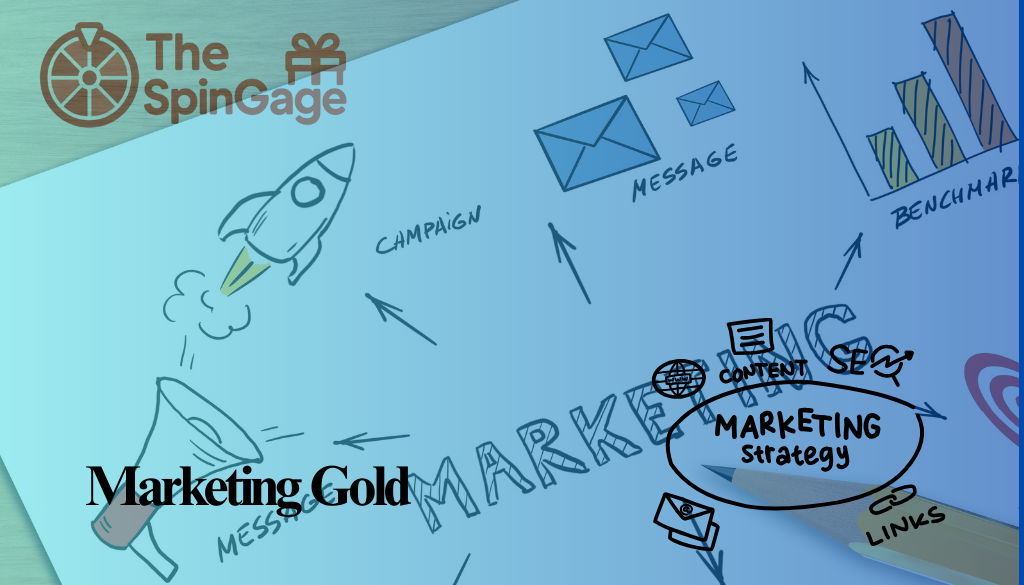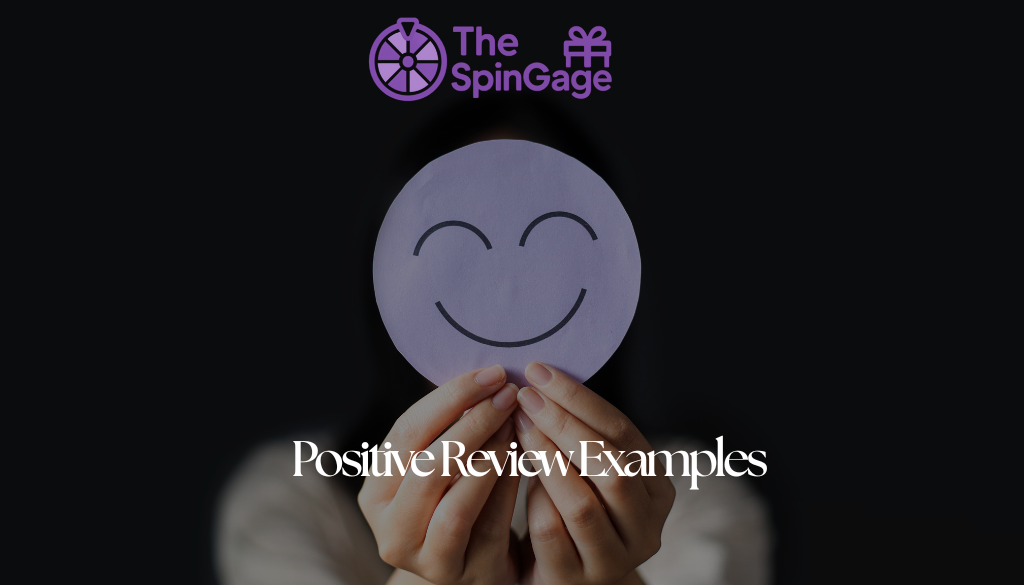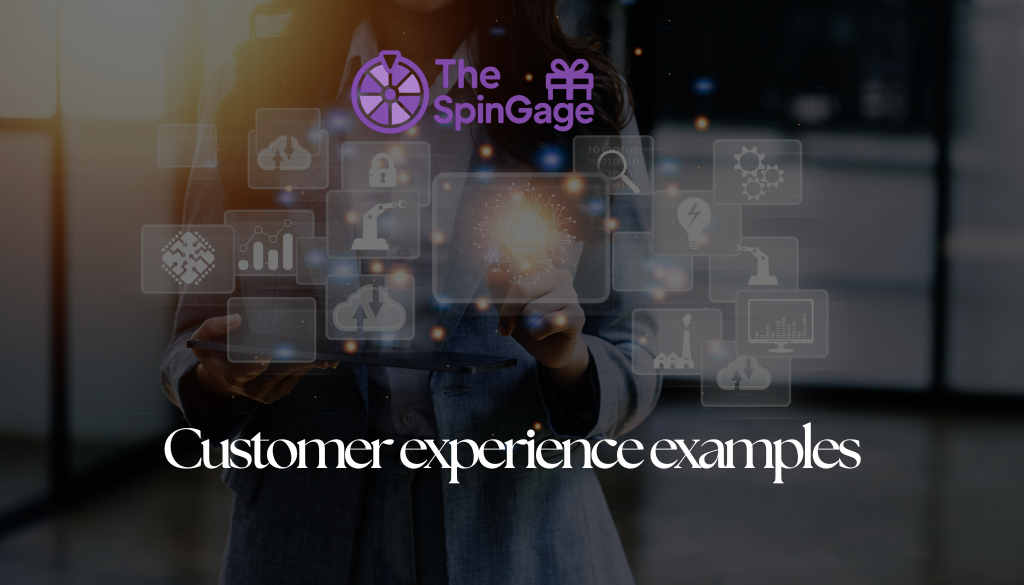Turning customer feedback into a valuable marketing strategy is a game-changer for businesses. By listening to their customers, companies can gain insights into their needs, preferences, and pain points.

This information can be used to create targeted marketing campaigns that resonate with their audience, drive engagement, and ultimately boost sales. Effective use of customer feedback can help businesses stay ahead of the competition and achieve their growth goals.
Table of Contents
Why are reviews more powerful than ads?
Reviews are more powerful than ads because they come from real customers who share their genuine experiences, making them more trustworthy and relatable. Unlike ads, which are designed to sell, reviews provide authentic insights, helping potential buyers make informed decisions. People tend to trust peer opinions over promotional messages, so positive reviews can influence choices more effectively and build long-term credibility for a brand.
How do positive reviews attract new clients?
Positive reviews attract new clients by building trust and credibility. When potential customers see genuine feedback praising a business’s products or services, they feel more confident in choosing that brand over competitors. These reviews act as social proof, showing that others have had satisfying experiences, which can influence decisions and encourage new clients to take action.
Ever wondered how your customers’ voices could become your most powerful marketing asset?

At The Spin Gage, we believe that every piece of customer feedback is a hidden treasure waiting to be transformed into marketing gold. By actively listening to your customers’ opinions, experiences, and suggestions, you can uncover deep insights into their needs, preferences, and pain points.
These insights allow you to craft highly targeted marketing campaigns, create authentic testimonials, develop compelling case studies, and even curate user-generated content that resonates with your audience.
The result? Increased engagement, stronger brand credibility, higher customer retention, and measurable growth in revenue. From analyzing patterns and sentiments to leveraging AI-driven tools, turning raw feedback into actionable strategies ensures your business not only stays competitive but thrives in a customer-centric ecosystem.
Don’t let valuable feedback go to waste—learn how to harness it effectively to elevate your marketing and build lasting customer loyalty.
Can SpinGage help generate consistent customer feedback?

Yes, SpinGage can help generate consistent customer feedback by providing a streamlined platform for collecting, analyzing, and acting on customer insights. With its intuitive tools, businesses can engage customers at the right touchpoints, ensuring feedback is gathered regularly and systematically. This not only helps identify trends and areas for improvement but also transforms feedback into actionable strategies that enhance customer satisfaction and loyalty.
Turn Feedback into Marketing Gold Today!
Discover How →
The Power of Customer Voices in Modern Marketing
Customer voices are the backbone of modern marketing, influencing purchase decisions and driving business success. In today’s competitive market, understanding customer opinions is crucial for businesses looking to improve their marketing efforts and customer satisfaction.
Why Customer Opinions Drive Purchase Decisions
Customer opinions significantly impact purchase decisions. According to a study, 85% of consumers trust online reviews as much as personal recommendations. This trust translates into purchasing decisions, with consumers more likely to choose products or services with positive reviews.
The ROI of Listening to Your Customers
Listening to customers can significantly improve ROI. By understanding customer feedback, businesses can identify areas for improvement and make data-driven decisions. This leads to increased customer satisfaction and loyalty, ultimately driving business growth.
Statistical Evidence of Feedback’s Impact
The impact of customer feedback on business outcomes is backed by statistical evidence. Here is a summary of key findings:
| Metric | Impact |
|---|---|
| Customer Retention | 5% increase in customer retention can lead to a 25% to 95% increase in profits |
| Customer Satisfaction | Companies that prioritize customer satisfaction see a 20% increase in customer loyalty |
| Revenue Growth | Businesses that actively collect and act on customer feedback see a 10% to 15% increase in revenue |
By leveraging customer feedback, businesses can drive growth, improve customer satisfaction, and ultimately increase their ROI.
Types of Customer Feedback Worth Mining
Understanding the diverse types of customer feedback is crucial for businesses aiming to leverage customer insights effectively. Customer feedback can be categorized in several ways, each providing unique benefits for marketing strategies.
Solicited vs. Unsolicited Feedback
Solicited feedback is collected through direct requests, such as surveys and questionnaires, allowing businesses to target specific areas of interest. In contrast, unsolicited feedback comes voluntarily from customers, often through social media or review platforms, providing unfiltered insights into customer experiences.

Quantitative vs. Qualitative Insights
Quantitative feedback involves numerical data, such as ratings and statistics, which can be easily analyzed to identify trends. On the other hand, qualitative insights come from detailed customer comments and reviews, offering rich, contextual information about customer opinions.
Direct vs. Indirect Customer Signals
Direct customer signals include explicit statements of satisfaction or dissatisfaction, while indirect signals can be inferred from customer behavior, such as purchase history or browsing patterns. Both types are valuable for crafting targeted marketing campaigns.
Strategic Methods to Gather Valuable Customer Insights
Businesses that leverage customer insights effectively are better positioned to outperform their competitors. Gathering these insights requires a multi-faceted approach that includes various strategic methods.
Designing Effective Surveys and Questionnaires
Surveys and questionnaires are direct ways to gather customer feedback. To be effective, they should be concise, clear, and relevant to the business’s goals. Open-ended questions can provide rich qualitative data.
Monitoring Social Media Conversations
Social media platforms are a goldmine of customer insights. By monitoring conversations related to their brand, businesses can gain real-time feedback and understand customer sentiments.
Conducting Meaningful Customer Interviews
One-on-one interviews with customers can provide deep insights into their needs and preferences. These interviews should be conducted in a conversational manner to encourage honest feedback.
Analyzing Online Reviews and Ratings
Online reviews and ratings are crucial sources of customer feedback. Analyzing them can help businesses identify areas for improvement and measure customer satisfaction.
| Method | Benefits |
|---|---|
| Surveys | Direct feedback, quantitative data |
| Social Media Monitoring | Real-time feedback, sentiment analysis |
Building a Systematic Feedback Collection Framework
To maximize the value of customer feedback, businesses must implement a well-organized feedback collection framework. This involves several key strategies that work together to ensure a comprehensive understanding of customer needs and preferences.
Optimal Timing for Feedback Requests
The timing of feedback requests is crucial. Asking for feedback at the right moment can significantly improve response rates. For instance, requesting feedback immediately after a purchase or interaction can yield more accurate and relevant insights.
Crafting Questions That Generate Usable Content
Question crafting is another vital aspect. Questions should be clear, concise, and designed to elicit useful responses. Open-ended questions can provide rich qualitative data, while multiple-choice questions can offer quantitative insights.
Integrating Feedback Opportunities at Every Touchpoint
Creating touchpoints for feedback across all customer interactions ensures that businesses capture a wide range of customer experiences. This can include surveys on websites, feedback forms in apps, or direct requests via email.
| Touchpoint | Feedback Method | Example |
|---|---|---|
| Website | Survey/Pop-up | “How would you rate your experience?” |
| Mobile App | In-app Feedback Form | “What can we improve in this app?” |
| Direct Request | “We value your opinion. Please share your thoughts.” |
Analyzing Customer Data to Uncover Marketing Opportunities
Unlocking the full potential of customer feedback requires a deep dive into data analysis. By examining customer data, businesses can identify valuable insights that inform marketing strategies.
Identifying Patterns and Recurring Themes
Analyzing customer feedback for patterns and recurring themes helps businesses understand common pain points and areas of satisfaction. This can be achieved by categorizing feedback into different segments, such as product, service, and overall experience.

Applying Sentiment Analysis to Customer Comments
Sentiment analysis is a powerful tool for understanding the emotional tone behind customer feedback. By applying natural language processing techniques, businesses can determine whether customer sentiments are positive, negative, or neutral.
Prioritizing Insights Based on Business Impact
Not all customer insights are equally valuable. Prioritizing insights based on their potential business impact ensures that the most critical issues are addressed first.
Using AI Tools for Feedback Analysis
AI tools can significantly enhance the analysis of customer feedback by automating the process of identifying patterns and sentiment. These tools can handle large volumes of data, providing insights that might be missed by manual analysis.
| Analysis Method | Description | Business Impact |
|---|---|---|
| Pattern Identification | Identifying common themes in customer feedback | Improves product development and customer satisfaction |
| Sentiment Analysis | Understanding the emotional tone of customer feedback | Enhances customer experience and brand reputation |
| AI-Driven Analysis | Using AI tools to automate feedback analysis | Increases efficiency and accuracy in identifying insights |
Transforming Raw Feedback into Marketing Gold
The journey from raw customer feedback to effective marketing strategies is both an art and a science. It involves sifting through various forms of feedback, identifying key insights, and creatively repurposing them into marketing assets that resonate with the target audience.

Creating Compelling Customer Testimonials
Customer testimonials are a powerful marketing tool, providing social proof and credibility. To create compelling testimonials, focus on specific stories of how your product or service solved a problem or improved the customer’s situation. Use direct quotes from satisfied customers to add authenticity.
Developing In-Depth Case Studies
Case studies offer a detailed look at how your product or service delivered value to a customer. They should include the challenge faced by the customer, the solution provided, and the results achieved. Quantifiable results make case studies more compelling and credible.
Curating User-Generated Content Campaigns
User-generated content (UGC) campaigns encourage customers to create content related to your brand. This can include photos, videos, or reviews. UGC not only provides fresh content but also fosters a sense of community among your customers.
Turning Customer Words into Branded Messages
To turn customer feedback into branded messages, identify common themes and sentiments expressed by your customers. Use these insights to craft marketing messages that reflect the voice and needs of your target audience. This approach ensures that your marketing efforts are customer-centric and more likely to resonate with potential customers.
Showcasing Positive Feedback Across Marketing Channels
Customer feedback is a goldmine for marketers, and showcasing it effectively is crucial for building trust and credibility. By leveraging positive customer experiences across various marketing channels, businesses can significantly enhance their brand reputation and drive customer engagement.
Featuring Customer Success Stories in Content Marketing
Customer success stories are a powerful tool in content marketing. They provide real-life examples of how a product or service has helped a customer achieve their goals. For instance, a company like HubSpot regularly features customer success stories on their blog, highlighting the challenges their customers faced and how their software helped solve these issues.
Incorporating Testimonials in Advertising
Incorporating customer testimonials into advertising campaigns can significantly boost credibility. A study by BrightLocal found that 82% of consumers read online reviews before making a purchase. Using testimonials in ads not only builds trust but also provides social proof.
Building Social Proof Through Numbers and Statistics
Numbers and statistics can be compelling forms of social proof. For example, “Over 10,000 customers have trusted our service” or “Our product has been rated 4.5 stars by over 5,000 users.” Such statements can be used across various marketing materials to build credibility.
| Marketing Channel | Type of Social Proof | Example |
|---|---|---|
| Email Campaigns | Customer Quotes | “I’ve seen a significant increase in sales since using this product.” |
| Social Media | Statistics | “Join over 20,000 satisfied customers who have rated us 4.5 stars.” |
Using Customer Quotes in Email Campaigns
Customer quotes can add a personal touch to email campaigns. By including a relevant testimonial, businesses can make their emails more engaging and persuasive. For example, “As one of our satisfied customers said, ‘This product has been a game-changer for my business.’” Such quotes can be placed in email newsletters or promotional emails to enhance credibility.
“The greatest marketing is done by satisfied customers.”
Philip Kotler
Converting Criticism into Marketing Opportunities
Criticism, when handled correctly, can become a powerful tool in your marketing arsenal. By responding thoughtfully to customer concerns, you can turn potential negatives into positives.
Responding Publicly to Address Concerns
When a customer voices a complaint, responding publicly is crucial. It shows that you value their feedback and are committed to making things right. Use this opportunity to demonstrate your brand’s commitment to customer satisfaction.
Showcasing Product Improvements Based on Feedback
Highlighting changes made based on customer feedback can be a compelling narrative. It shows that you’re proactive and dedicated to continuous improvement. For instance, if customers complained about a product feature, and you’ve since revamped it, share this story.

Creating Before-and-After Marketing Narratives
Before-and-after narratives are powerful marketing tools. They visually demonstrate the positive impact of your product or service. Use customer testimonials to create compelling stories of transformation.
Turning Critics into Advocates
By addressing criticism effectively, you can turn critics into advocates. This involves not just resolving their issues but also following up to ensure they’re satisfied with the outcome. Happy customers become loyal brand advocates, sharing their positive experiences with others.
| Strategy | Benefit |
|---|---|
| Public Response | Demonstrates commitment to customer satisfaction |
| Product Improvements | Shows proactive approach to customer feedback |
| Before-and-After Narratives | Visually demonstrates positive impact |
| Turning Critics into Advocates | Creates loyal brand advocates |
Essential Tools for Feedback Collection and Management
The key to unlocking the potential of customer feedback lies in utilizing the right feedback tools and platforms. These tools enable businesses to systematically collect, analyze, and act upon customer insights.
Customer Feedback Platforms and Software
Customer feedback platforms such as Medallia, Qualtrics, and SurveyMonkey provide comprehensive solutions for collecting and analyzing customer feedback. These platforms offer features like survey creation, response analysis, and reporting, helping businesses to understand customer sentiments and preferences.
Social Listening and Monitoring Tools
Social listening tools like Hootsuite and Sprout Social enable businesses to monitor social media conversations about their brand, competitors, and industry-related topics. By analyzing these conversations, companies can gain valuable insights into customer opinions and trends.
Analytics Solutions for Processing Feedback Data
Analytics solutions such as Google Analytics and Tableau help businesses process and visualize feedback data, identifying patterns and trends that inform marketing strategies. By leveraging these tools, companies can make data-driven decisions to enhance customer satisfaction and loyalty.
As emphasized by Forbes, “Companies that leverage customer feedback to drive business decisions are more likely to outperform their competitors.” By adopting the right feedback collection and management tools, businesses can stay ahead in today’s competitive landscape.
Cross-Departmental Integration of Customer Insights
To truly leverage customer insights, organizations must adopt a unified approach across departments. This integration ensures that customer feedback is not siloed but rather used to inform strategies across the business.
Aligning Marketing with Customer Service
When marketing and customer service teams share insights, they can create more effective campaigns. For instance, common customer complaints can be addressed in marketing materials, showcasing how a product or service solves a specific problem. As Forrester notes, “Aligning marketing and customer service can lead to a significant increase in customer satisfaction and loyalty.”
Informing Product Development with Customer Feedback
Customer feedback is invaluable in shaping product development. By understanding customer needs and pain points, product teams can design solutions that meet market demands. Companies like Apple have excelled by incorporating customer feedback into their product development process, resulting in innovative products that resonate with their audience.
Creating Company-Wide Feedback Loops
Establishing feedback loops across the organization ensures that customer insights lead to continuous improvement. This involves not just collecting feedback but acting on it and then following up with customers to show that their input has made a difference. As
“You can’t manage what you don’t measure, and you can’t improve what you don’t manage.”
This principle underscores the importance of closing the loop with customers.
By integrating customer insights across departments, businesses can drive more informed decision-making, enhance customer satisfaction, and ultimately boost their bottom line.
Measuring the ROI of Your Feedback-Driven Marketing
Understanding the return on investment (ROI) of feedback-driven marketing is crucial for businesses to allocate resources effectively. To achieve this, companies must implement a robust measurement framework that captures the full impact of their marketing efforts.
Key Performance Indicators to Track
To measure the ROI of feedback-driven marketing, businesses should focus on key performance indicators (KPIs) that directly relate to their marketing objectives. These may include conversion rates, customer acquisition costs, and customer lifetime value.
| KPI | Description | Example Metric |
|---|---|---|
| Conversion Rate | Percentage of visitors who complete a desired action | 5% increase in sales |
| Customer Acquisition Cost (CAC) | Cost of acquiring a new customer | $50 per customer |
| Customer Lifetime Value (CLV) | Total value a customer brings over their lifetime | $500 per customer |
Attribution Models for Feedback-Based Campaigns
Attribution models help businesses understand how different marketing channels contribute to their overall ROI. For feedback-driven marketing, multi-touch attribution models are particularly useful as they consider the various touchpoints a customer interacts with before converting.
Calculating the Business Impact of Customer Insights
To calculate the business impact, companies should compare the revenue generated from feedback-driven marketing campaigns against the costs incurred. This involves tracking revenue, calculating campaign costs, and determining the net gain.
Conclusion: Cultivating a Customer-Centric Marketing Ecosystem
By harnessing the power of customer feedback, businesses can create a robust marketing ecosystem that drives success. A customer-centric approach allows companies to build trust, foster loyalty, and ultimately drive revenue growth.
Incorporating customer insights into marketing strategies enables businesses to develop targeted campaigns that resonate with their target audience. This, in turn, cultivates a customer-centric marketing ecosystem that is responsive to the needs and preferences of customers.
To maintain a competitive edge, businesses must prioritize customer feedback and integrate it into their marketing efforts. By doing so, they can create a marketing ecosystem that is agile, responsive, and customer-focused. This approach will enable businesses to stay ahead of the curve and achieve long-term marketing success.
FAQ
What is the best way to collect customer feedback?
The best way to collect customer feedback is through a combination of surveys, social media monitoring, and customer interviews. This allows businesses to gather both quantitative and qualitative insights.
How can customer feedback be used in marketing?
Customer feedback can be used to create compelling customer testimonials, develop in-depth case studies, and curate user-generated content campaigns, ultimately turning raw feedback into Marketing Gold.
What are the benefits of using customer feedback in marketing?
Using customer feedback in marketing can enhance credibility, improve customer engagement, and drive business growth by showcasing positive customer experiences and opinions.
How can businesses respond to negative customer feedback?
Businesses can respond to negative customer feedback by responding publicly to address concerns, showcasing product improvements based on feedback, and turning critics into advocates.
What tools are available for collecting and managing customer feedback?
Essential tools for collecting and managing customer feedback include customer feedback platforms, social listening and monitoring tools, and analytics solutions for processing feedback data.
How can customer insights be integrated across different departments?
Customer insights can be integrated across different departments by aligning marketing with customer service, informing product development with customer feedback, and creating company-wide feedback loops.
What are the key performance indicators to track when measuring the ROI of feedback-driven marketing?
Key performance indicators to track include metrics such as customer acquisition costs, customer retention rates, and revenue generated from feedback-based campaigns.
How can businesses measure the business impact of customer insights?
Businesses can measure the business impact of customer insights by using attribution models for feedback-based campaigns and calculating the revenue generated from marketing efforts driven by customer feedback.












Leave a Reply